Taiwan Air Defense System: Radar Control of Air and Space
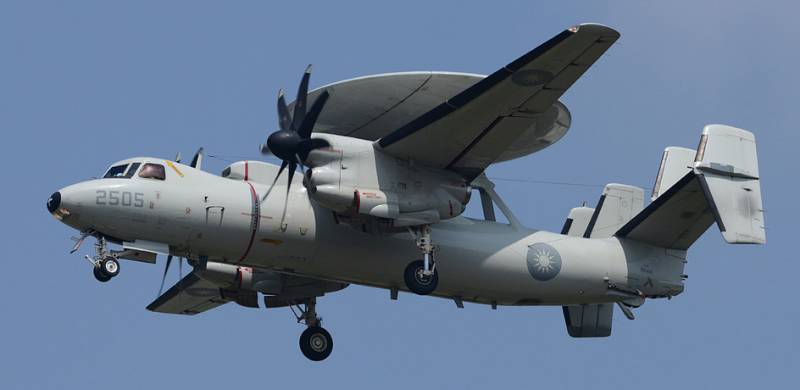
The Taiwanese armed forces are conducting their history from the National Revolutionary Army of China, which was led by the bourgeois-nationalist Kuomintang Party. Formations of the Kuomintang after the overthrow of the monarchy for a long period of time controlled most of the territory of China. After the party was headed by the leader of its military wing, Chiang Kai-shek, in 1925, units of the National Revolutionary Army participated in the Sino-Japanese armed confrontation and in the civil war.
In 1949, communist forces led by Mao Zedong with Soviet support gained the upper hand in the civil war, and on October 1, the formation of the People's Republic of China was announced.
The command and part of the Kuomintang troops with equipment and weapons were evacuated to an island separated by the Taiwan Strait. The best officers and fighters of Chiang Kai-shek were also transferred there, who formed the basis of the future armed forces of the Republic of China, while most of the soldiers who fought for the nationalists were abandoned on the mainland.
In the 1950s, the People's Liberation Army of China tried to solve the problem of Taiwan by force of arms. The sides exchanged artillery strikes, and fierce air battles flared up over the Taiwan Strait. However, thanks to US support and weakness fleet Chinese Communists failed to annex the rebellious province to mainland China.
During the Cold War, the leadership of the Kuomintang declared the return of control over the territory of mainland China. The armed forces of the Republic of China, equipped with modern American-made equipment and weapons for that time, have long relied on a qualitative advantage over the numerically superior forces of the PLA.
Over time, the contradictions between the Communist Party of China and the Kuomintang decreased somewhat, and the parties ceased to consider each other only through the slit of the sight. So, in 1992, an agreement was reached between the CPC and the Kuomintang, under which the parties agreed that "China and Taiwan are not separate states," but each side reserved its own understanding of "one China." This position suited the PRC, since the Kuomintang at least recognized the historical, socio-economic and cultural unity of the mainland and the island.
After the Democratic Progressive Party came to power in Taipei, advocating the proclamation of an independent state and complete separation from China, relations between the parties escalated again.
The current government of Taiwan, which, thanks to Western investment, has made very serious progress in the field of high technologies, as well as during the Cold War, relies on military, political and economic support from the United States. Although Washington does not publicly recognize Taiwan's independence, the island is regularly visited by US officials, which Beijing perceives as dangerous signs of separatism and an attempt to give US-Taiwan relations a full-fledged interstate character. In response to such actions, the PRC regularly conducts sea and air force maneuvers near the island.
As for Washington's position, the White House adheres to the provisions of the Taiwan Relations Act of 1979, which states that the US will not establish official diplomatic relations with the autonomous government of the island, which Beijing considers an integral part of a unified country.
Thus, the United States is applying the doctrine of "strategic uncertainty" to Taiwan, under which the Americans deliberately evade the question of whether they will defend Taiwan from invasion by military means.
As mentioned above, in the past, the ROC military command hoped to repel an attack by a much larger PLA due to technological superiority, available Western weapons and better training of their troops. However, at present, thanks to the rapid economic growth in the PRC and large-scale investment in science, education and high-tech research, the armed forces of mainland China have made a rapid breakthrough.
In the new conditions, Taipei can no longer hope for a decisive qualitative superiority, in connection with which the "Porcupine Doctrine" was adopted. Within the framework of this doctrine, it is envisaged to inflict unacceptably heavy losses on the enemy, which will lead to a decrease in the offensive potential of the PLA, painful political and economic consequences.
In the current situation, the government of Taiwan is spending very heavily on defense. So, in 2023, the allocation of $19,4 billion was announced. At the same time, China's defense budget in 2022 approached $300 billion. It is clear that, given the size of the territory and population, the autonomous island province, with all its achievements in the field of electronics and high technology, cannot be compared with the main part of the Celestial Empire in resources that can be spent on defense, and the government of Taiwan is forced to carefully choose priorities.
One of the main areas of security is the control of the airspace over the island, the sea area and part of the continental territory. For this, modern American-made radars are mainly used, which provide multiple duplication and overlap of the radar field over the entire range of altitudes, as well as long-range radar patrol aircraft.
Airspace Surveillance Radar Stations
Radio engineering units, whose main task is to cover the air situation, are part of the Air Force of the Republic of China (English Republic of China Air Force - abbreviated as ROCAF). Organizationally, ground-based radar posts are subordinate to the command of the Communications, Air Traffic Control and Information Wing, the main and reserve command posts of which are located at air bases in the vicinity of Taipei. Information about the air situation is also transmitted via cable communication lines and high-frequency radio channels to the headquarters of the Tactical Command Air Wing.
In total, there are twelve fixed radar posts in Taiwan and the Penghu island archipelago, located 40 km to the west of the island.
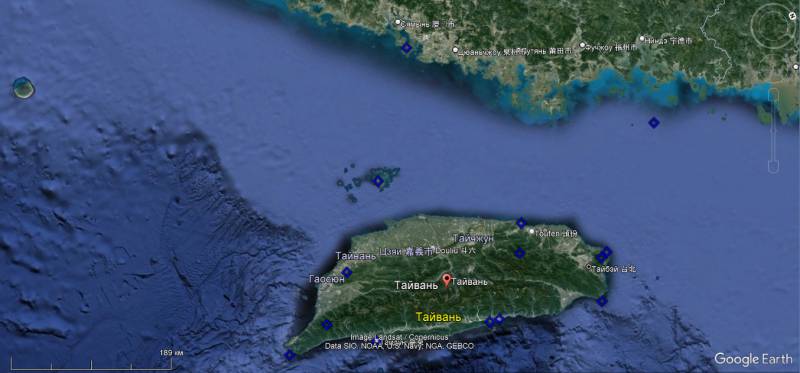
Layout of fixed radar posts in Taiwan and islands controlled by the ROC
Two more stationary radars operate on the islands of Kinmen and Matsu, located in close proximity to the mainland of China.
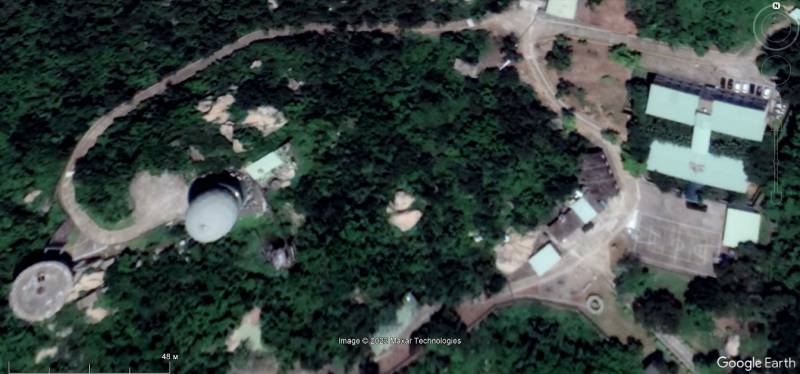
Satellite image of Google Earth: Taiwanese radar post on Matsu Island
In total, there are more than three dozen stationary and mobile radars to cover the air situation and warn of a missile attack. Approximately two thirds of them operate in standby mode. The maximum density of the radar field is provided in the areas of the cities of Taipei and Kaohsiung.
Freely available Google Earth satellite images clearly show that the antenna posts of all stationary Taiwanese radars designed to monitor the air situation are covered with radio-transparent plastic domes that protect valuable equipment from the effects of adverse meteorological factors.
Radars located on the islands of Kinmen and Matsu are able to see airborne objects several hundred kilometers deep in the territory of the PRC, which, of course, the PLA Air Force does not like very much.
More than 30 years ago, Hughes Electronics Corporation supplied Taiwan with several stationary HADR (English Hughes Air Defense Radar), also known as HR-3000 radars. Although stations of this type are morally and physically obsolete, Western sources claim that at least five of these radars are still in service.
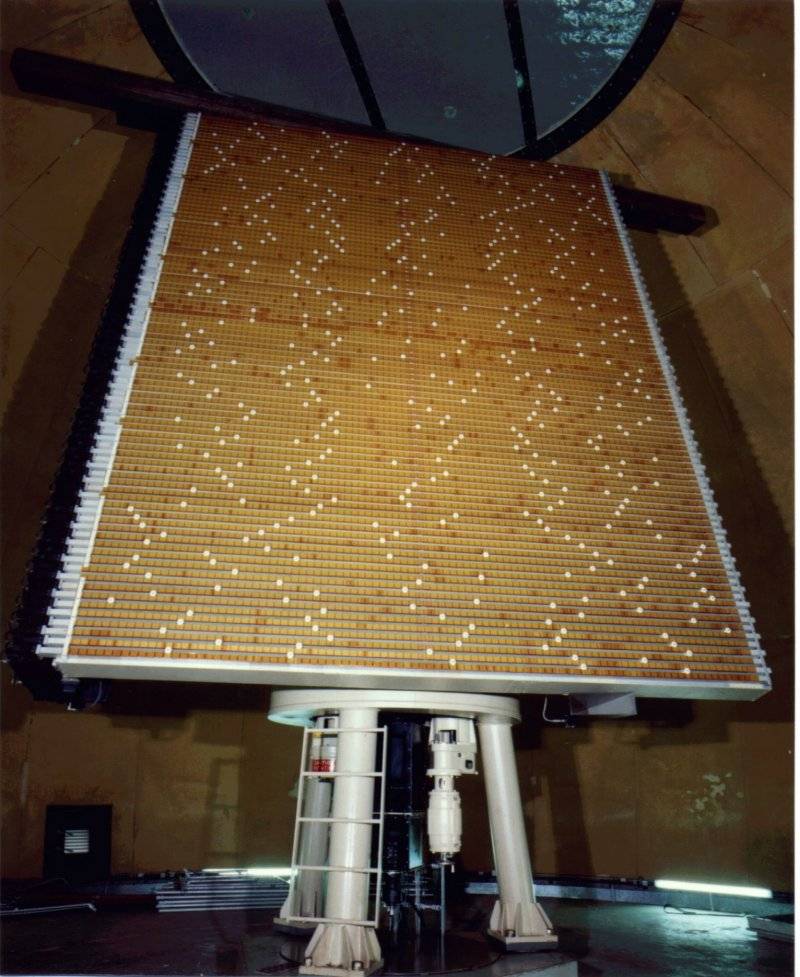
Stationary HADR radar antenna under a radio-transparent dome
The HADR radar with phased array operates at frequencies around 3 GHz. Transmitter pulse power - 1,5 MW. Instrumental range - 450 km.
The basis of the fixed radar network in Taiwan is now the American stations AN / FPS-117, operating in the frequency range 1-215 MHz. This three-dimensional AFAR radar has become widespread, both in the NORAD radar warning network and among US allies. The detection range of high-altitude targets at the AN / FPS-1 radar can reach 400 km.
The AN / FPS-117 radar was developed in the mid-1980s by Lockheed Martin specialists based on the AN / TPS-59 radar, which was in service with the USMC. Currently, several variants of this station have been created, the technical appearance and characteristics of which can meet the requirements of a particular customer.
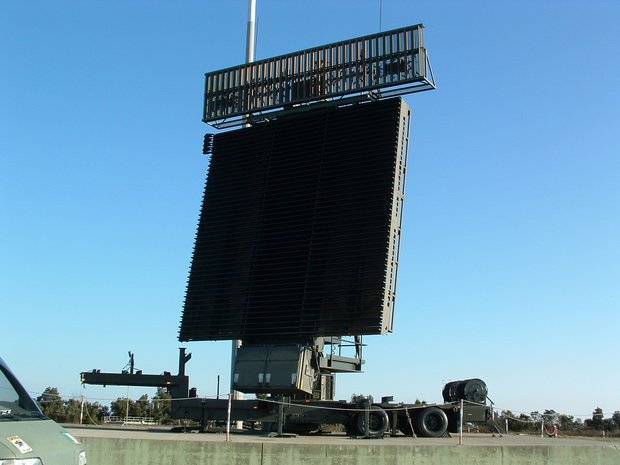
Towed antenna post radar AN / FPS-117
If necessary, the AN / FPS-117 radar can be relocated, while all elements of the station are placed on wheeled platforms. However, in practice, these stations in most cases operate stationary.
Radars of the AN / FPS-117 family are distinguished by increased radiation power, various linear dimensions of the AFAR, as well as enhanced capabilities for detecting tactical and operational-tactical missiles.
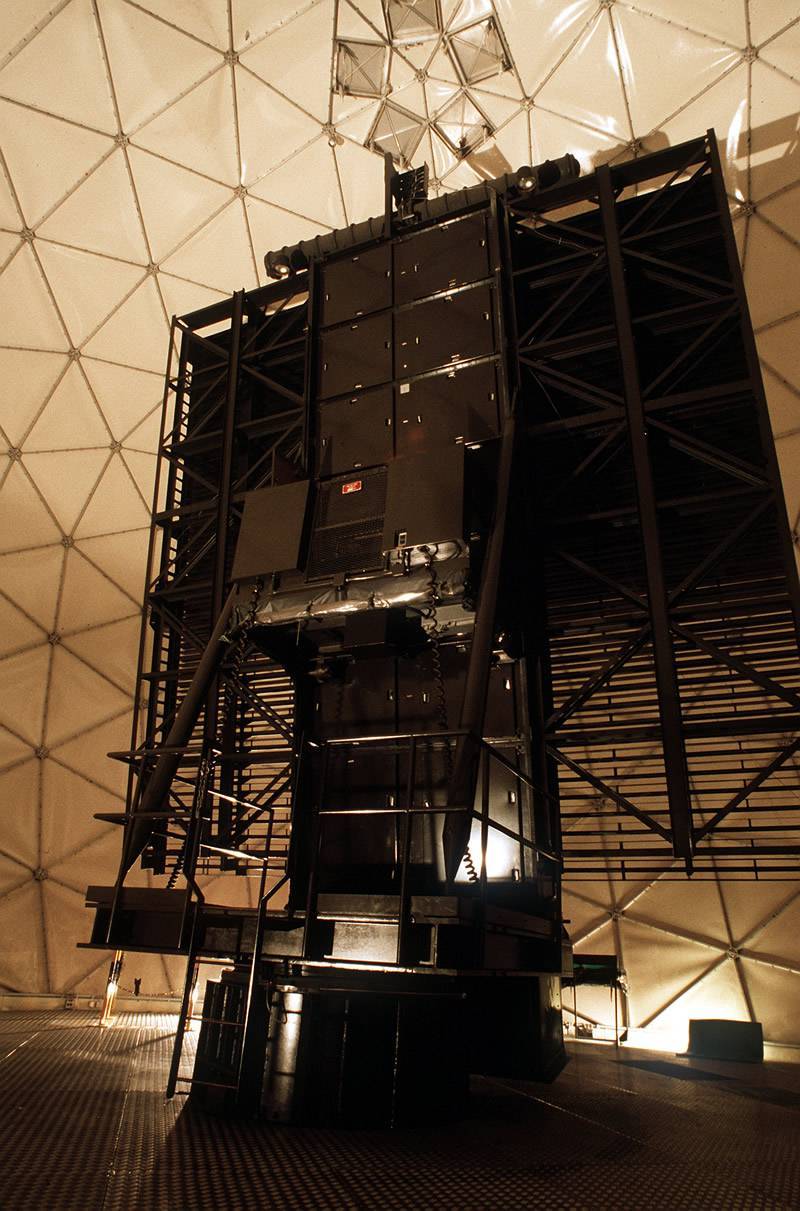
Stationary radar antenna AN / FPS-117 under a radio-transparent dome
This station has a very significant operational resource and reliability. Due to the modular design, it has good maintainability and high modernization potential. Taiwan purchased 7 AN/FPS-117s in 2002 and is currently in the process of upgrading them.
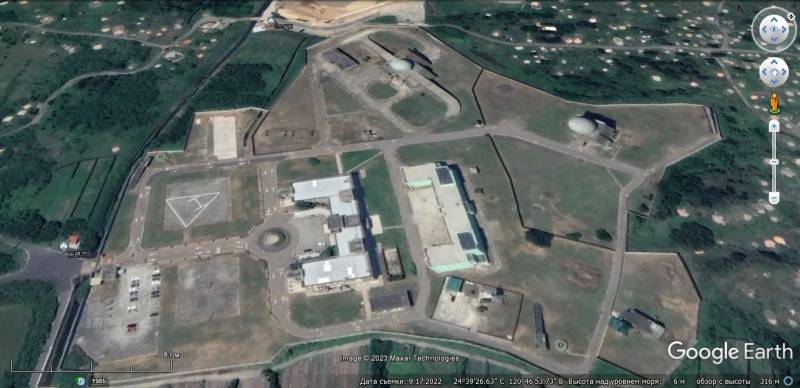
Satellite image of Google Earth: radar post on the northwest coast of Taiwan
Often, AN/FPS-117 radars are located within a radar post, where there are also old HADR radars.
The mobile version of the AN/FPS-117 radar is the AN/TPS-77. The degree of unification for these two radars reaches 80%. All elements of the AN / TPS-77 station are mounted on the chassis of heavy all-wheel drive army trucks.
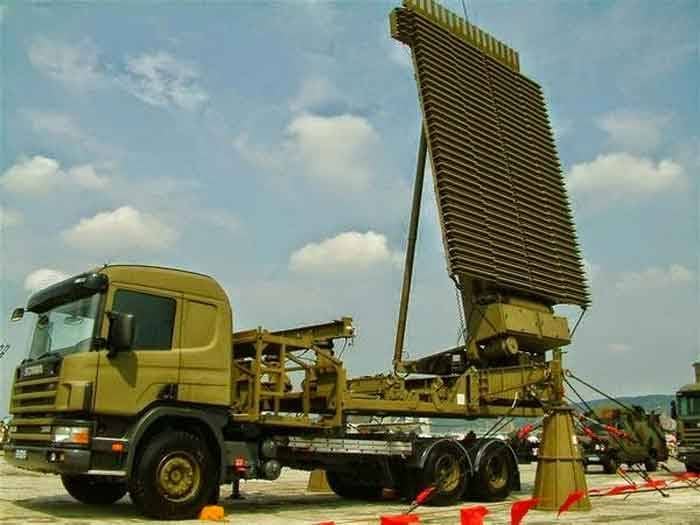
Antenna post radar AN / TPS-77
Four AN/TPS-77 radars were purchased from the US at the same time as the AN/FPS-117. These mobile stations, as a rule, do not carry out long-term duty, for the most part they are located in highly protected shelters and are considered by the Air Force command as a reserve in case of destruction of stationary radars, the coordinates of which are reliably known to a potential enemy.
In 2000, the ROCAF spent about $100 million upgrading old US AN/TPS-43E2 radars, received in the late 1970s, to the AN/TPS-75V level.
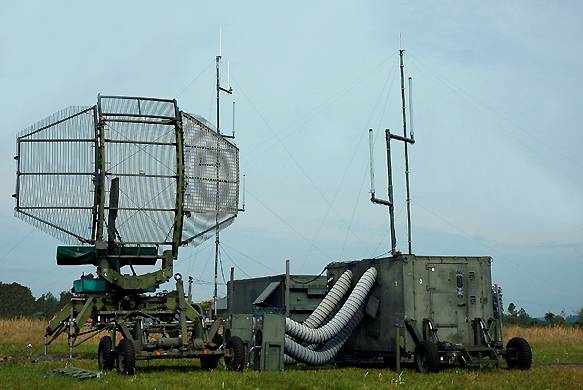
Radar AN / TPS-43
The AN / TPS-43 three-coordinate radar, created by Westinghouse in 1970, operated in the 2 900-3 100 MHz frequency range and had an instrumental range of 440 km. The station consists of three parts weighing up to 3 kg, which made it possible to transfer it by air and transport it by all means of transport.
By the standards of the 1970s and 1980s, the AN / TPS-43 radar was one of the best, but after 25 years of operation, Taiwanese radars of this type were very worn out and no longer met modern requirements in terms of noise immunity and information processing speed.
In 1988, a radical upgrade variant of the AN / TPS-43 appeared, designated AN / TPS-75V. Initially, Westinghouse was engaged in the modernization of the AN / TPS-43 radar, but later this direction was transferred to the Northrop-Grumman corporation. By order of the US armed forces and in the interests of foreign customers, 75 stations of the AN / TPS-67 type were upgraded to the level of AN / TPS-43V.
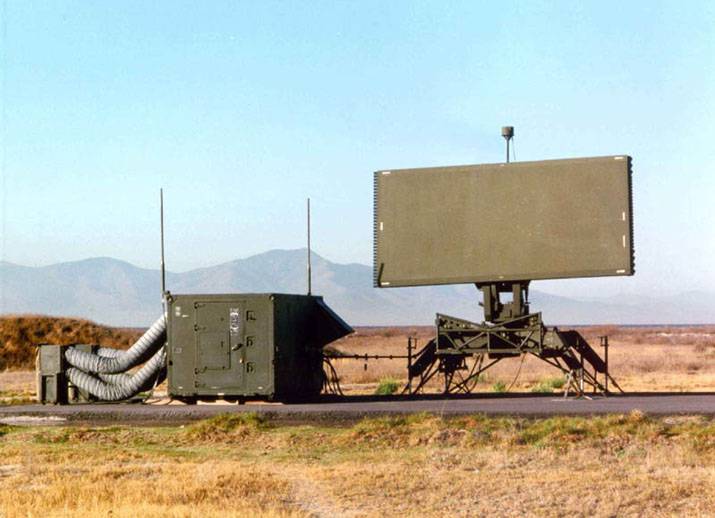
Radar AN/TPS-75V
After modernization with the transition to a new element base and modern means of processing and displaying information, the maximum detection range remained the same, but at the same time, noise immunity and operational reliability were significantly improved and vulnerability to anti-radar missiles was greatly reduced. The capabilities for detecting ballistic operational-tactical missiles have also been expanded. The mobility of the upgraded radar remained high. The entire system can be dismantled and loaded onto two M939 trucks and is air transportable by the C-130 Hercules military transport aircraft.
It is known that all Taiwanese surveillance radars in standby mode are linked into a single network with the help of repeatedly duplicated communication channels and are paired with a combat control system of their own design. Which automatically controls the actions of ground air defense forces and fighter aviation. The primary radar information receivers are linked to the JTIDS (Joint Tactical Distribution System) data transmission equipment, which allows, in a closed mode from interception, to issue information about specific targets directly to the means of destruction: to command posts of batteries of anti-aircraft missile and artillery systems, as well as to pilots of interceptor fighters.
Missile warning radars
In connection with the active development of short-range and medium-range missiles in the PRC, the Taiwanese military, back in the early 1980s, became preoccupied with the need for their timely detection and issuance of target designation to anti-missile defense systems. At present, this problem has been largely solved, thanks to the adoption of the AN / FPS-117 and AN / TPS-77 multifunctional standby radars, which, in addition to aircraft, helicopters, cruise missiles and drones, can successfully detect short-range ballistic missiles.
Even before purchasing the fixed AN/FPS-117 and mobile AN/TPS-77 radars, the Taiwanese military purchased two GE-36 mobile radars from Lockheed Martin in 1984 for $592 million. This station is an export modification of the AN / TPS-59, created by order of the US Marine Corps.
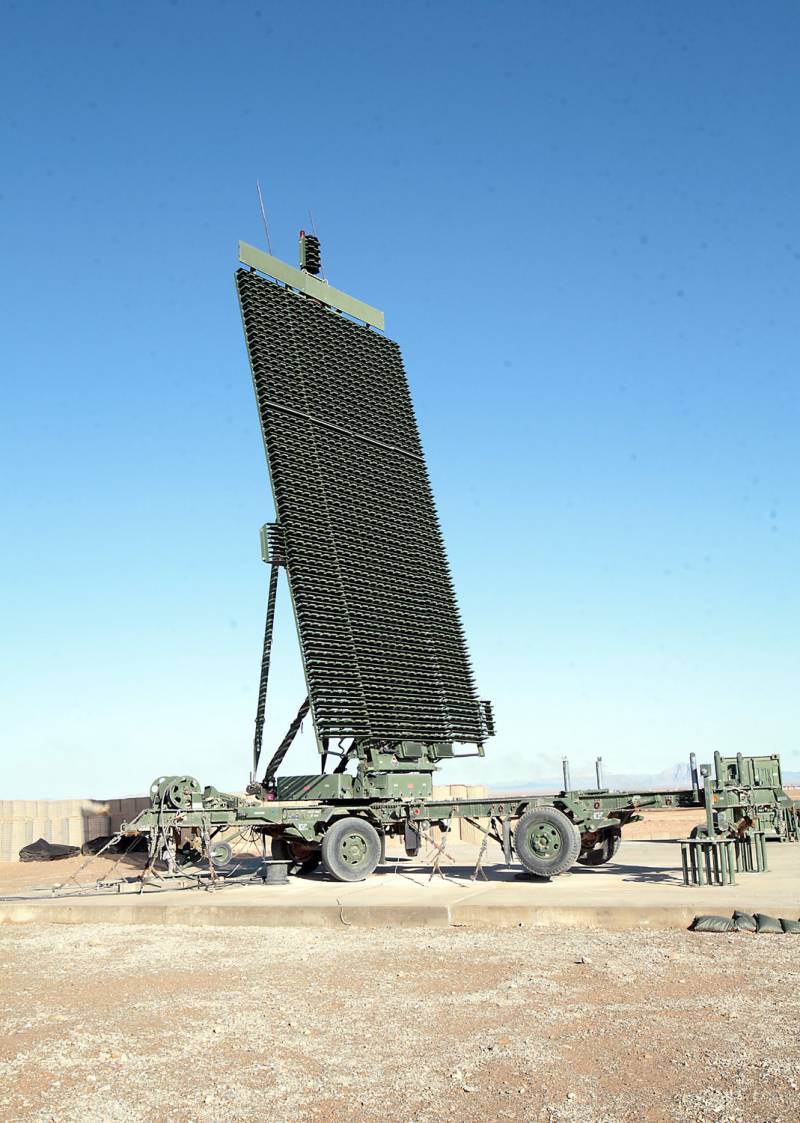
Antenna post radar AN / TPS-59
The GE-592 radar, operating in the 1–215 MHz frequency range, was intended to work in conjunction with medium and long-range air defense divisions and is mainly focused on the detection of ballistic missiles. According to the brochures, the radar can detect a target with characteristics corresponding to the Soviet OTP R-1 at a distance of more than 400 km. In addition to ballistic targets, when operating in the circular view mode, the GE-17 station is able to effectively work on aerodynamic objects. At the same time, the maximum detection range of large high-altitude targets exceeds 700 km.
But taking into account the fact that the detection range of ballistic missiles at the AN / TPS-59, AN / TPS-77 and AN / FPS-117 radars is relatively small, this leaves too little time to declare an alarm, to put anti-missile systems on high alert. defense and making a decision to intercept.
Currently, a very limited group of countries possesses over-the-horizon missile attack warning radar stations, and Taiwan could only purchase a radar of this class from the United States.
For a long period of time, the basis of the global American missile attack warning system was the AN / FPS-115 Pave Paws type stations belonging to the SSPARS family (English The Solid State Phased Array Radar System - Solid State Phased Array Radar Systems).
AN/FPS-115 is an active phased array radar built on a semiconductor element base. This station was built under contract with the US Air Force Electronic Systems Division by Raytheon in the late 1970s.
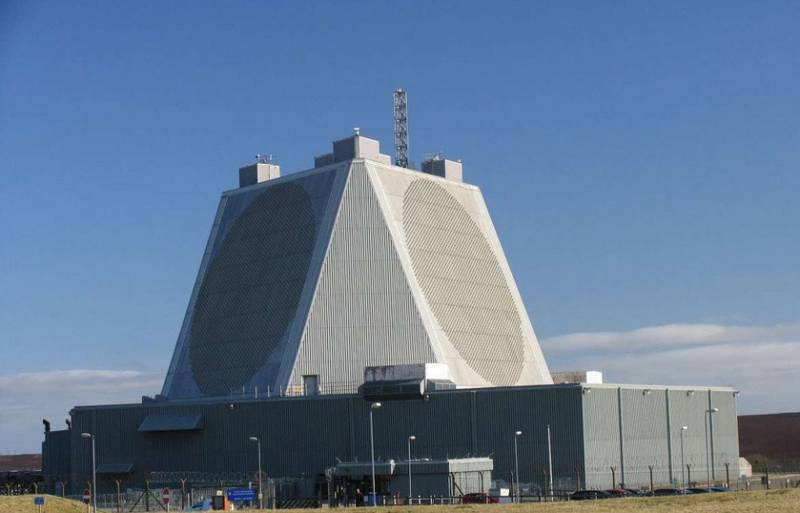
Early warning radar AN / FPS-115
The diameter of two circular antenna arrays is about 30 m. They are tilted back by 20° and are built into the wall of the pyramidal building. The radar coverage of both antennas covers a vertical sector from 3° to 85° and a width of 240° on the sides. The station with a pulse power of up to 600 kW operates at frequencies of 420–450 MHz. Instrumental range - 4 km.
In the 115st century, the United States replaced all of its AN / FPS-132 early warning radars with new AN / FPS-2004 stations. In 1,776, despite Chinese protests, the Americans sold two decommissioned AN/FPS-115 radars for $XNUMX billion. One station is installed in a mountainous area in Hsinchu County, and the other is used as a source of spare parts.
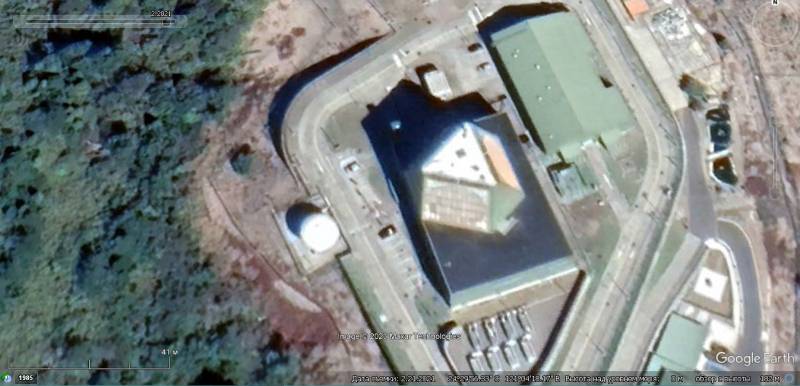
Satellite image of Google Earth: AN / FPS-115 radar in Taiwan
Experts believe that by selling the AN / FPS-115 radar to Taipei, the Americans “killed several birds with one stone” - they managed to profitably attach, if not the newest, but still functional station. Without any doubt, Taiwan is broadcasting a "radar picture" in real time to the US (which, apparently, was a key condition of the deal), while paying for the cost of maintaining and maintaining the radar. The benefit of the Taiwanese side in this case is the ability to observe rocket launches and space objects over the territory of the PRC.
Long-range radar patrol aircraft
The aviation group of electronic warfare and early warning of the Air Force of the Republic of China, along with EW C-130NE aircraft, has six AWACS aircraft. The contract for the supply of the first batch of four E-2T aircraft was concluded in 1993, these aircraft were transferred to ROCAF at the end of 1995.
Taiwan received used E-2Cs taken from retired US Navy aircraft with parts from decommissioned E-2Bs. Nevertheless, these AWACS aircraft in terms of detecting air and sea objects have the same capabilities as the American E-2C Hawkeye with AN / APS-139 radars capable of seeing low-altitude targets against the background of the earth.
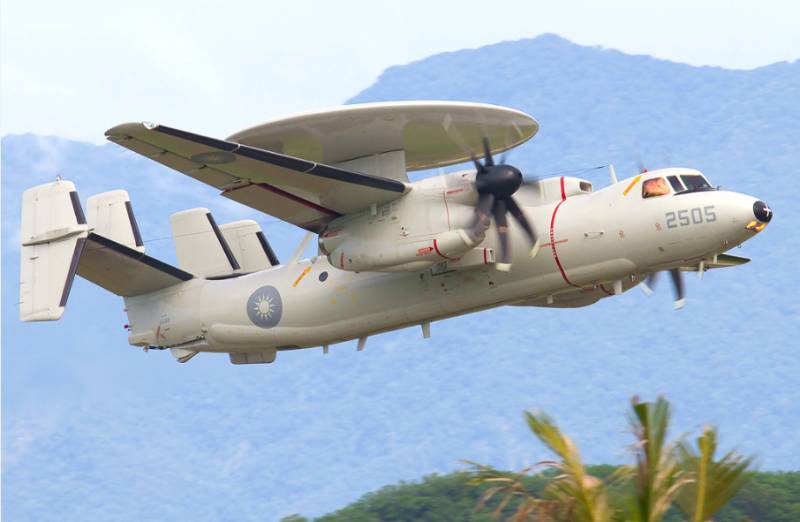
The E-2C AWACS aircraft patrolling at an altitude of 9 meters is capable of detecting more than 000 air targets at a distance of up to 700 km and guiding 450 fighters. In addition to the AN / APS-30 radar, Taiwanese AWACS aircraft carried AN / ALR-139 passive electronic intelligence stations that were very advanced by the standards of the 1990s.
In 2006, two more E-2K modifications were received, which, in terms of their capabilities, corresponded to the Hawkeye 2000 modification with the AN / APS-145 radar. In parallel with modern radars, aircraft were equipped with satellite navigation receivers, new computers, tactical information display equipment and advanced communications equipment. More powerful and economical Allison T56-A-427 engines with 8-bladed carbon fiber propellers improved takeoff and landing performance and increased flight range.
In 2008, the US Congress approved a deal to upgrade four E-2K aircraft to the E-2T level. The first batch of two aircraft was sent to the US in June 2010 and returned at the end of 2011. In December 2011, the second batch of two aircraft was sent for modernization and returned to Taiwan in March 2013.
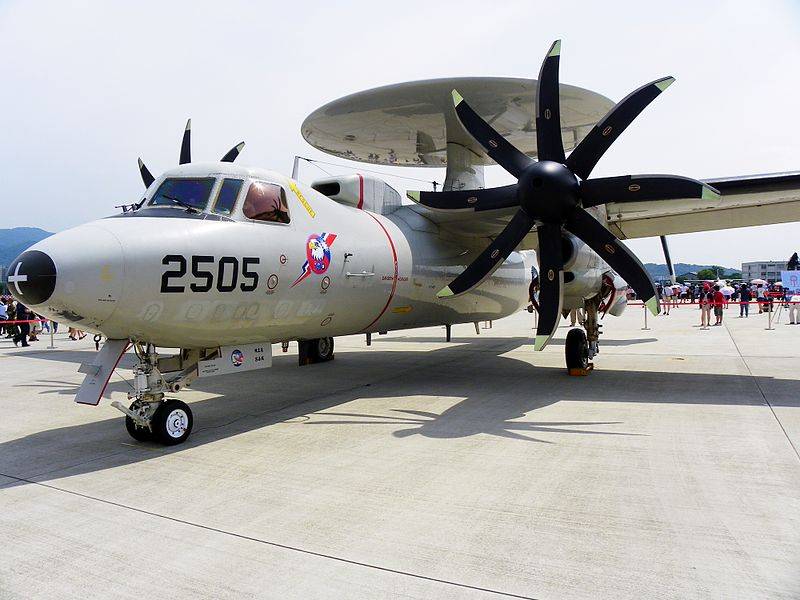
For the maintenance and current repair of E-2T aircraft at the Pingtung air base, located in the southwestern part of the island of Taiwan, the necessary infrastructure has been created and reinforced concrete shelters have been erected.
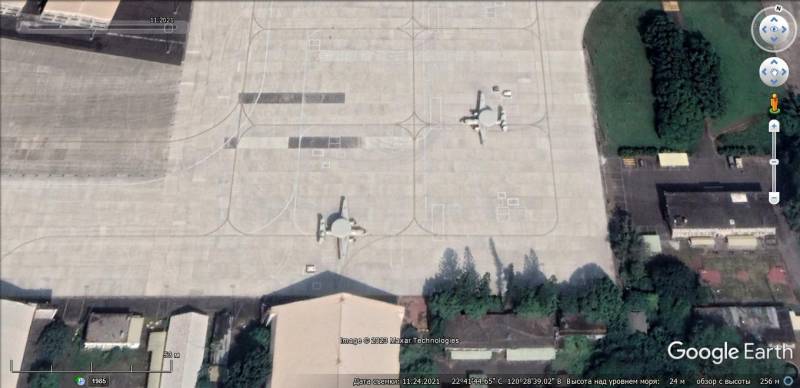
Satellite image of Google Earth: E-2T AWACS aircraft at Pingtung airbase
Usually, the AWACS aircraft of the ROC Air Force are dispersed over several air bases. They use airstrips on Dongsha Island (450 km southwest of Taiwan Island and 600 km northeast of Hainan Island) and Kinmen Island (187 km from Taiwan and 10 km from the Chinese city of Xiamen).
American experts believe that the presence of six modern AWACS aircraft in the ROCAF allows round-the-clock control of the airspace and sea surface around the island at a distance of more than 1 km and look deep into the territory of the PRC for several hundred kilometers.
To be continued ...
Information